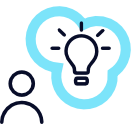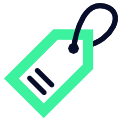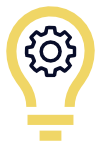
The Outcomes
Deeper Thinking and Learning
Students are consistently working on cognitively complex tasks and grappling with
intellectually demanding problems.
As a result, students are developing deeper critical and creative thinking skills that will enable them to solve complex problems and become more future-ready. More opportunities for creative and critical thinking will unleash the natural love of learning for all!
Student Agency and Individualization
Teachers are harnessing technology tools to create learning environments in which students have greater control over what and how they learn.
As a result, students develop the lifelong learning habits, deep interests and expertise, and the analytical research skills that will support them in interacting with the complex information systems of the real world.
Supportive and Collaborative School Culture
Schools are hubs of community collaboration and encouragement.
As a result, students and families feel safe in school and supported by the community. Students are empowered through culturally responsive learning experiences and targeted social-emotional instruction. Teachers are encouraged to collaborate and innovate with the aim of deepening student learning and promoting holistic growth and development.
The Innovation Spectrum

Read more about The Innovation Sepctrum from Educate.
The Innovation Spectrum is Educate’s framework for supporting schools to build meaningful and equitable teaching and learning practices. The nine focus areas are codified from our research base and field experience.









